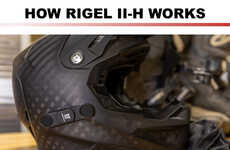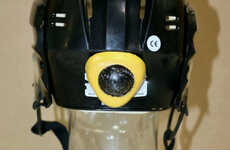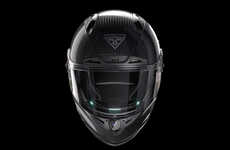
The RAID Army Helmet is Equipped for Mission Surveillance
M — February 12, 2016 — Art & Design
References: 3formdesign & tuvie
The RAID Special Ops army helmet is designed to provide protection as well as surveillance support during missions for the United Shield International thanks to a sleek, compact and accessorized design. The helmet features a lightweight structure complete with several added gadgets that help wearers see and track their opponents in a variety of terrains and situations.
Going beyond the functionality of a standard helmet, the RAID design focuses on increasing the wearer's sight as well protecting them in moments of combat. The helmet comes in either an all-black or camo coloring with a hardshell exterior complete with a neck tie for added support.
The helmet features a series of hooks and clips for attaching necessary vision-improving equipment including vision googles, strobe lights, batteries, night vision goggles as well as sunglasses.
Going beyond the functionality of a standard helmet, the RAID design focuses on increasing the wearer's sight as well protecting them in moments of combat. The helmet comes in either an all-black or camo coloring with a hardshell exterior complete with a neck tie for added support.
The helmet features a series of hooks and clips for attaching necessary vision-improving equipment including vision googles, strobe lights, batteries, night vision goggles as well as sunglasses.
Trend Themes
1. Intelligent Tactical Helmets - Developing lightweight helmets with improved surveillance support capabilities results in a more advanced device for military purposes.
2. Modular Helmet Accessories - Creating a helmet with added gadgets that can be easily attached and detached offers a new revenue stream for accessory manufacturers.
3. Advanced Helmet Materials - Researching new materials to create helmets that offer better protection with less weight may disrupt the market for current helmet manufacturers.
Industry Implications
1. Military Technology - Integrating advanced technology into military equipment could provide a competitive advantage for technology companies working in the defense industry.
2. Sports and Adventure Apparel - Repurposing modular helmet accessories for civilian use, such as for extreme sports, camping, and hiking could tap into a new market for apparel companies.
3. Materials Science - Developing new materials for lightweight helmet construction could provide a disruptive innovation for the materials science industry and have far-reaching applications beyond military helmets.
5.5
Score
Popularity
Activity
Freshness























